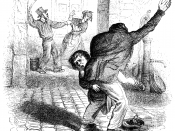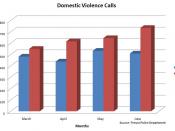Domestic Family Violence by definition consists of physical, emotional and psychological violence. Family Violence is prevalent among all domestic groups. This form of violence crosses ethnic, racial, age, national origin, sexual orientation, religious and socioeconomic lines. Those families at highest risk are those currently experiencing some complicating form of stress. This would include poverty, unemployment, low educational levels and certain ethnic groups. Job disparities including income disparities between spouses, over crowding and poor social structure also increase and contribute to family violence. By the most conservative estimate, each year 1 million women suffer nonfatal violence by an intimate partner. Men, women and children can all be victims of physical violence as well as emotional and psychological battering.
The health related costs of rape, physical assault, stalking and homicide exceed 4.1 billion dollars each year for direct medical and mental health services. According to a 1994 study 37 percent of all emergency room visits were for violence related injuries.
Severe consequences of violence may occur depending on the severity, frequency and escalation. Some of the reported complications include; bruises, knife wounds, pelvic pain, headaches, back pain, broken bones, gynecological disorders, low birth weight babies, perinatal deaths, sexually transmitted diseases, Central nervous system disorders, gastrointestinal disorders, and heart or circulatory disorders. Victims can also experience symptoms of posttraumatic stress syndrome such as emotional detachment, sleep problems, and flashbacks. Women with a history of violence have a higher risk of alcoholism, substance abuse and suicide attempts. They also tend to have unhealthy diet behaviors and overuse the healthcare system.
Roy's' Adaptation Model/Domestic Violence
Sister Callista Roy's Adaptation model covers modes, which include physiological or physical mode, self-concept mode, role function mode, and interdependence mode.
Physiological/Physical Mode
What are the capabilities to meet the basic survival needs of the family members? Are they able...


